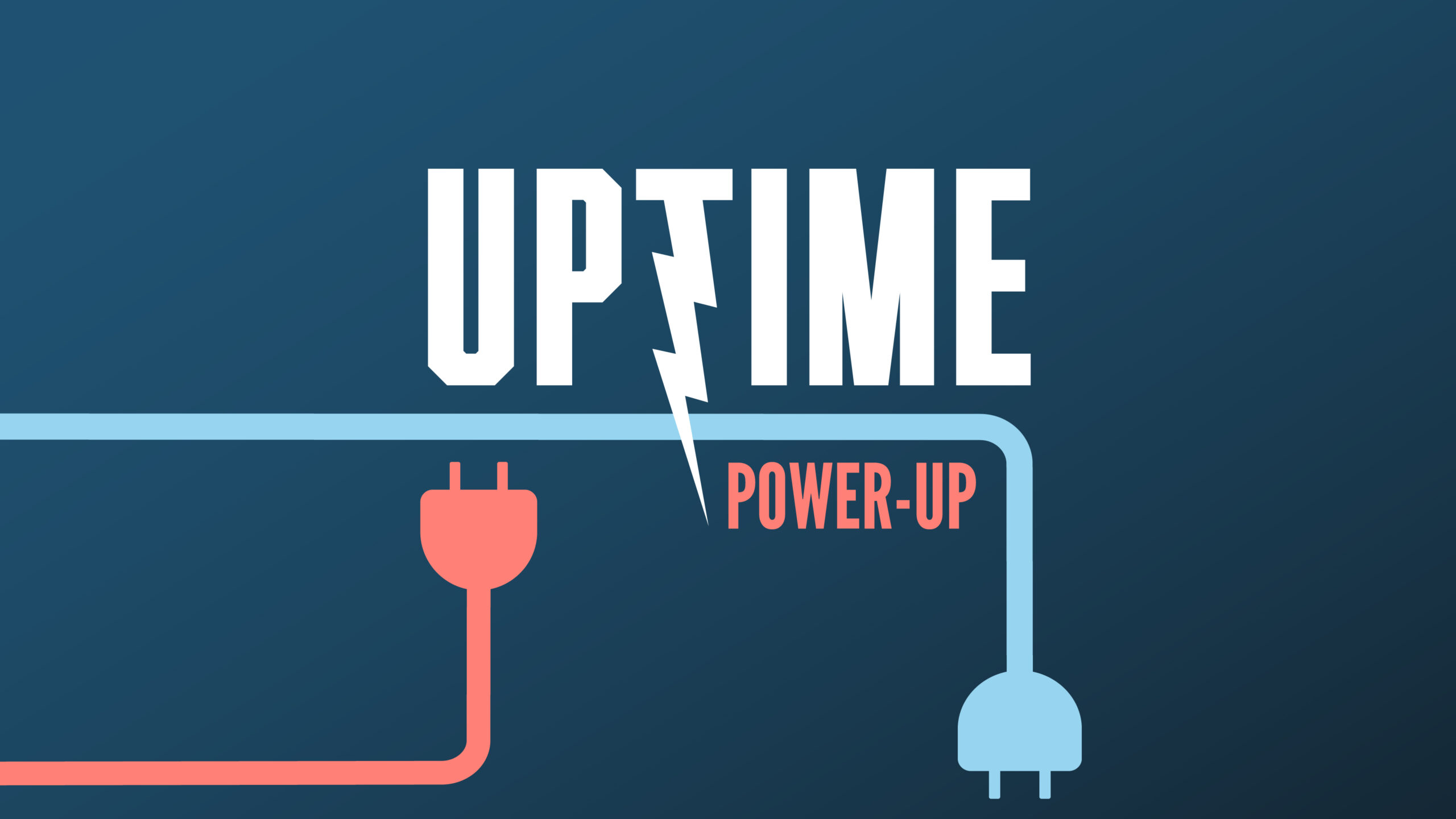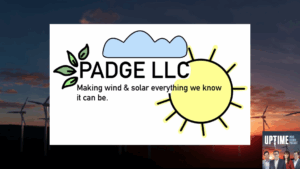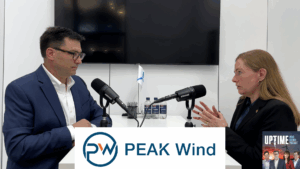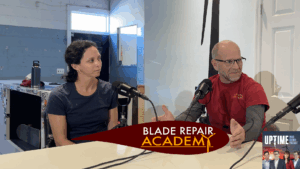Podcast: Play in new window | Download
This week we discuss cooling system patents, including Siemens Gamesa’s method for creating air channels for better temperature control, Goldwind’s predictive temperature moderating, and GE’s adjustable power output based on component temperatures.
Fill out our Uptime listener survey and enter to win an Uptime mug! Register for Wind Energy O&M Australia! https://www.windaustralia.com
Sign up now for Uptime Tech News, our weekly email update on all things wind technology. This episode is sponsored by Weather Guard Lightning Tech. Learn more about Weather Guard’s StrikeTape Wind Turbine LPS retrofit. Follow the show on Facebook, YouTube, Twitter, Linkedin and visit Weather Guard on the web. And subscribe to Rosemary Barnes’ YouTube channel here. Have a question we can answer on the show? Email us!
This is Power Up, where groundbreaking wind energy ideas become your clean energy future. Here’s your hosts, Allen Hall and Phil Totaro.
Allen Hall: Phil, this episode of Power Up is going to focus on cooling. And as wind turbines get bigger and bigger, thermal controls are becoming more important. You need to make sure that there’s no thermal runaways, and with the amount of power.
8, 10, 12, 15 megawatts going on inside of some of these nacelles. You’re seeing a lot of patents and innovation around cooling, and this first one is from Siemens Gamesa, and it has to do with the generator itself. And the patent describes a cooling system for the generator that places air channels to better control temperature.
Within the generator. Now, the key feature includes the magnet elements arranged in rows with groove like recesses that allow for targeted airflow between the components. Now, that design creates multiple cooling paths with gaps somewhere between like a half a millimeter and ten millimeters wide that enable better heat dissipation.
So, obviously Siemens Gamesa sees the future, which is thermal control in a generator, because if you have overheating in generators That can be quite expensive to fix, so they’re trying to address it up front, Phil, with this basically airflow pattern.
Phil Totaro: Yeah, and, and as you mentioned, not only are generators getting bigger but particularly for offshore, the operational efficiency matters a lot.
and how you control both the flux density and efficiency of the generator, balanced against how you have to cool the thing to maintain the kind of an air gap that you need in order to get the efficiency you want. It, it just throws these thermal engineers into complete chaos most of the time.
So the way that they’re architecting this is so that you can control the airflow in those channels in between the, the magnet holders to prevent hotspots. For the long term, if it keeps happening and you keep getting the hotspot, it can actually cause thermal degradation in the magnets and in The, the generator structure itself.
So again, in order to maintain kind of peak operational efficiency, cooling becomes a a critical component to that.
Allen Hall: Our second patent is from Goldwind and it is also focused on cooling up and then the cell. And it. Is an idea that is wrapped around really a sophisticated coolings control system that uses predictive temperature monitoring to optimize cooling.
And as you can well imagine, as these generators get bigger, there’s just a lot of nooks and crannies and you need to be able to monitor the hole in the cell area for temperature increases and to control it. Well, this system connects a cooling device and a yaw controller to a frequency converter that controls the operation based on the predictive temperature.
Temperature thresholds. Now the key innovation is ability to anticipate when cooling will be needed and by calculating future temperature profiles and allowing a more proactive reaction to that temperature control. So they’re, they’re using a lot more information to predict where the temperatures will be and from what it sounds like, Phil, is they’re kind of yawing the turbine out of peak power slightly.
to control the temperature so they don’t have a thermal runaway.
Phil Totaro: Yeah. And what makes this innovation really unique is, as you mentioned, the fact that they have it connected to the frequency converter itself, because what they can do with that and how that’s going to impact and influence The temperature prediction is they can look at frequencies over time and see if there’s, a substantial increase or decrease in, in the frequency on the converter and use that to kind of inform this, this predictive model that they’re going to use to determine.
How much they need to kind of, I’ve likened this to, you’re, you’re flat on the accelerator in your car or something, and then you kind of let off a little bit to, to just let everything cool down. And then, you, you step back on, on full throttle once your, your brakes and your bearings all get back down into a temperature range that, that’s, not going to cause your wheels to explode.
It’s kind of a similar principle here with being able to connect this first to the frequency converter and use that to influence the, the model and the signals that are, that are being generated. And then secondly, as you mentioned, connecting it to the yaw system is also very unique in that they want to be able to just angle the turbine slightly so that, as you mentioned, it’s not on peak power 100 percent of the time because that can cause, thermal degradation.
So it’s a, it’s a really clever idea. I like it. And our
Allen Hall: third patent is from GE Renewables over in Spain, and the patent is very similar to the Goldwind one, actually. And it’s a method for dynamically adjusting the wind turbine power output based on component temperatures. And in this particular case, they’re, instead of just using ambient temperature to determine the power decisions.
So in Spain it can get quite hot, or in India it can get quite hot. Instead of just monitoring outside temperature, internal temperature inside the nacelle around the generator, they have a system to monitor multiple component temperatures. And then you have a thermodynamic model that predicts what the temperature will climb to.
And in this particular patent, they also talk about derating essentially the turbine, slowing it down, let everything cool down a little bit and stabilize so it doesn’t have a thermal runaway. So the GE approach is a little different in that they’re looking at basically sensors that probably already exist in the turbine and using that knowledge to then create a thermodynamic model.
So the idea is similar, Phil, to what Goldman was proposing.
Phil Totaro: Yeah, similar, but what GE is specifically talking about is how you’re, you’re establishing the maximum power set point. And so that’s not something that Goldwind had contemplated in theirs. And what GE is trying to do with this is ensuring that As I, as I mentioned when describing the Goldwyn Patent, if you, if you liken this to, keeping your foot on the accelerator in a car, what GE’s doing is they’re, they’re controlling when you let off and, and put your foot back on, but normally how a lot of companies do it is, you, you, Let off the accelerator and in the case of a wind turbine, you’re kind of derating down to the point where the thermal sensor triggers, a below threshold kind of thing.
And then, you can ramp power back up. What GE is specifically doing is they’re going to They’re using the temperature whether it’s thermocouples or other, temperature sensors that are, that are monitoring the, the components in the turbine, they’re using that to determine the, the maximum power set point.
So that at all times they’re outputting as much power as they possibly can. They’re not just letting their foot off the accelerator. They’re. Completely, and then putting it back on, they’re basically throttling back a little and, but still giving, their, their customers basically of, of their wind turbines, the maximum amount of power output that they can.
Allen Hall: Does that create a hunt and peck situation for the turbine that it’s going to be yawing quite a bit to maintain that peak power without
Phil Totaro: thermal runaway? They can tune it. to the point where it’s not going to be as much hunt and pack and cause a lot of issues with the Yaw system. To be blunt, I haven’t actually seen whether or not they’ve implemented this yet.
So we’ve, we’ve kind of marked this down as something that we hope they explore at some point in the future commercially, because I think it’d be a really clever addition to their, their technical repertoire. And something that’s probably, desirable. bit of functionality for, an asset owner or an operator to, to have is, keeping the turbine’s maximum power set point at literally the, the maximum it can possibly be at all times.
While maintaining the, the thermal regulation on all the components in, in in the nacelle.
Allen Hall: That’s the key to operating a wind turbine. You can make one part of the turbine more efficient, but you have to look at what the downstream effects are. And if you start, Damaging yaw brakes and yaw motors. It may not be worth it.
So it’s a real trade off. It’s, it’s complicated.
Phil Totaro: There’s, there’s always design compromises whenever you’re doing any type of system optimization, particularly around controls. And as we talked about a few weeks ago on, on PowerUp, you can. You can over optimize a little bit too much, and have way too many controls doing way too many opposing things.
So, this is one of those where it requires dependence and interaction with the mechanical system. So that’s something that in order to not induce wear on the turbine, that’s probably something that takes a good degree of precision, and a good degree of importance too when again, it comes to both the, the engineering side of it and the operation side.











